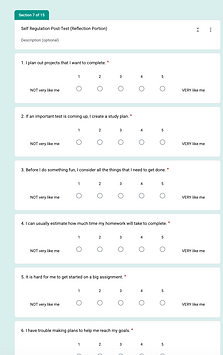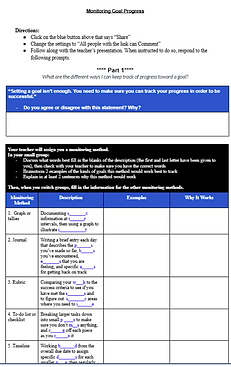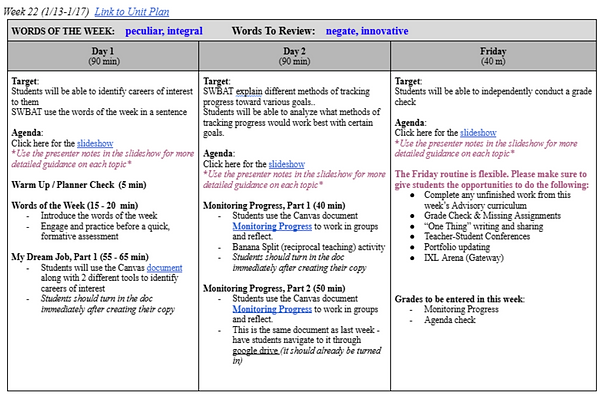The Plan and Execution
Advisory Curriculum Development
Key Components
Identifying the Need for Change
Surveys & Feedback → Students and teachers reported that Advisory lacked structure and purpose.
Common Issues Before Implementation:
-
Advisory was treated as a free period, leading to low engagement.
-
Teachers were not given clear guidance, making implementation inconsistent.
-
Students lacked self-regulation strategies and didn’t see the value in Advisory.
Goals for the New Curriculum:
-
Standardized framework across two schools
-
Structured progression from 9th to 12th grade
-
AVID-based strategies to build student organization, reading, writing, inquiry, and collaboration skills
-
CCR and SEL focus to guide students toward college and career readiness
Resource and Stakeholder Input

Curriculum Design and Structure


Instructional Approaches Used:
-
AVID instructional strategies
-
Self-regulation techniques
-
Project-based learning
-
College & Career Readiness (CCR) activities
-
Social-Emotional Learning (SEL) modules
Implementation and Training
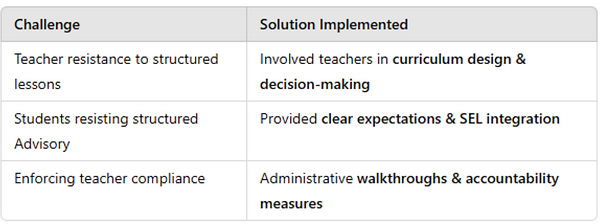

Ongoing Maintenance & Adaptation

Measuring Success Outcomes
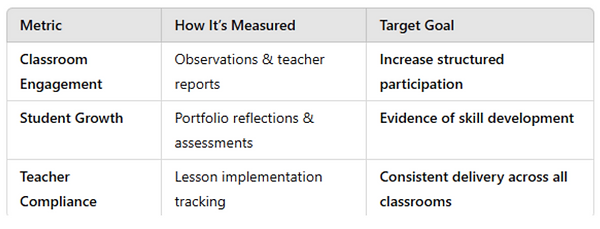
Early Results & Observations:
-
Teachers who appreciate structured, ready-to-use curriculum find it beneficial.
-
Some students push back on the workload.
-
Too early to determine long-term impact, but teacher feedback remains promising.
Snapshots from the Scope and Sequence

